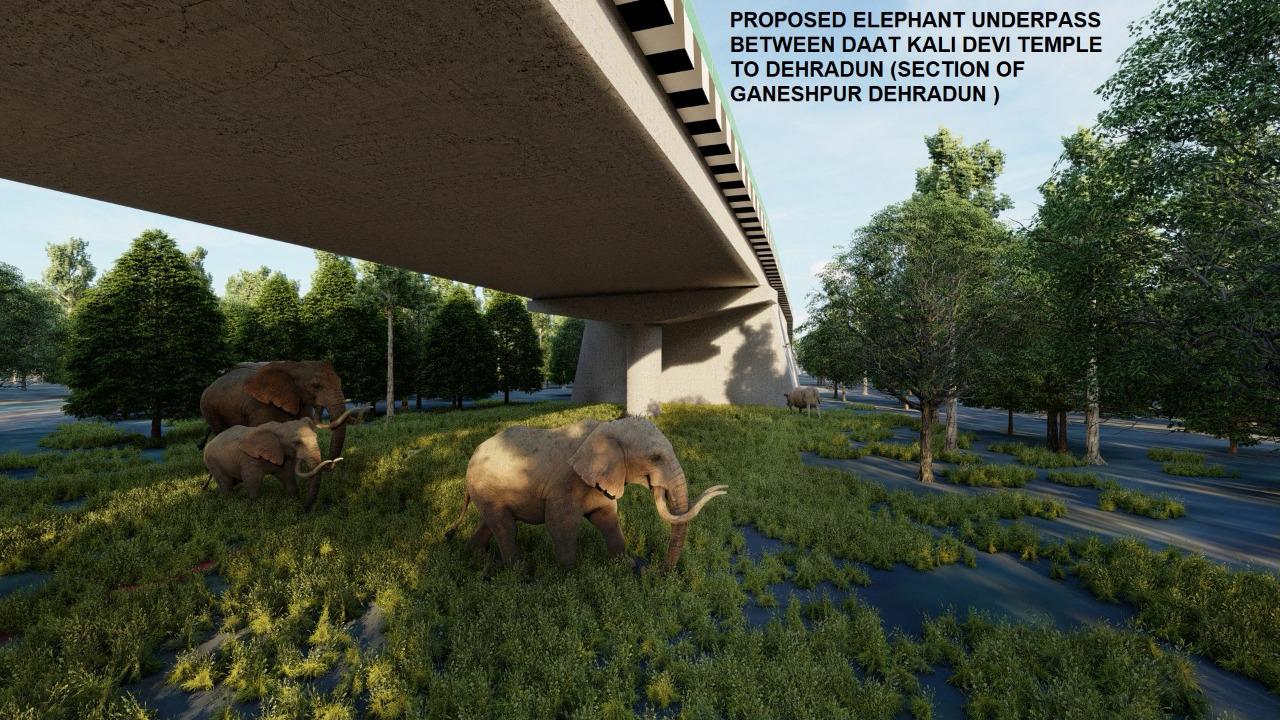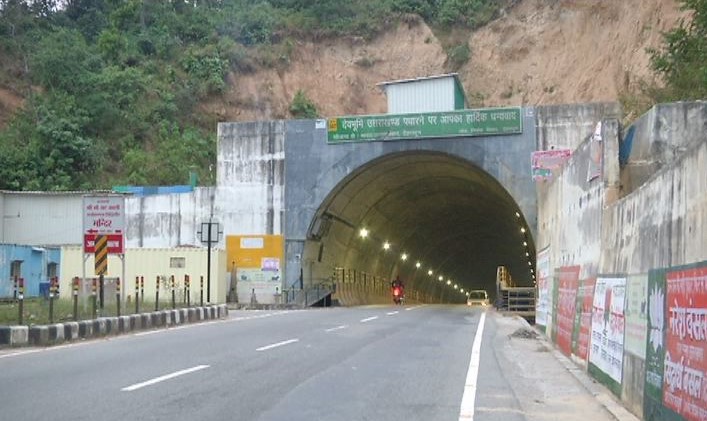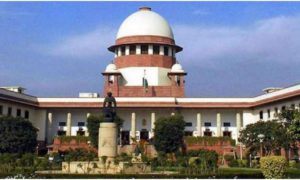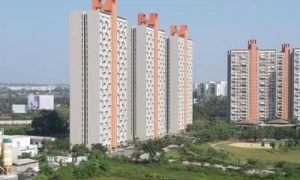Tourists headed to Dehradun and Mussoorie via road will soon be treated to breath-taking views from a 16-km elevated corridor that will allow unrestricted movement of animals underneath. The wildlife corridor is one of the main attractions of the Delhi-Saharanpur-Dehradun economic corridor, the foundation stone for which was laid by Prime Minister Narendra Modi on Saturday.
The elevated corridor will connect Ganeshpur-Mohand in Saharanpur district with Uttarakhand’s capital Dehradun. It will run along the 28-km stretch of National Highway 72A that sits between the Shivalik forest range known for abundant wildlife, including elephants. While the existing two-lane highway will be used to allow free movement of animals, the elevated corridor is expected to cut journey time drastically.
One side of the forest houses the Rajaji Tiger Reserve. The two-lane NH 72A goes up to Dehradun, the gateway to Uttarakhand, and is known to keep busy year-round with trucks and buses choking up traffic at times. The 28-km stretch, including the 12-km chunk connecting Mohand and Daat Kali temple, often becomes a nightmarish commute. The 40-minute travel stretches to 60 minutes or even 120 minutes during peak traffic. As per national highway authorities, there are a total of 120 horizontal curves on the hilly terrain that reduce vehicle speed to 25-30 km per hour.

The traffic situation also dangerously inconveniences wildlife in the Shivalik hills, the sub-Himalayan mountain range that covers parts of Jammu & Kashmir, Uttarakhand, Himachal Pradesh, UP, Punjab and Haryana.
WHAT THE ELEVATED CORRIDOR WILL LOOK LIKE
As per an official note, the elevated highway will be the country’s first such road passing through forest area. The 16-km corridor will be built in two sections. The first section will be a 12-km stretch between Mohand and Daat Kali Mandir. The second section will be a 4-km stretch beyond Daat Kali temple till Asharodi.
SBS Negi, a consultant involved in the project, told News18 that the elevated highway will run along the Monsoon River next to the Rajaji Tiger Reserve. “The old highway will give free passage to wildlife. The elevated highway will be used for commuting. It will hardly take 10 minutes to reach Daat Kali Temple. The elevated highway will be a treat for the eyes,” he said, adding that commutes could also have the chance to see the area’s wildlife.

According to the official note, the economic corridor will cut short the driving time between Delhi and Dehradun to 150 minutes. Anil Taneja, regional director PHD Chamber of Commerce and Industries, said the corridor will boost tourism in the region. “Time matters for tourists and the project will definitely prove to be a game-changer for the tourism industry in the hills,” he said.
The total cost of the project is pegged at Rs 8,300 crore and it is set to completed by the end of 2024. More than 10,000 trees will be axed to make way for the elevated highway. While more than 2,000 trees, mostly in Sal forest, will be cut in the Dehradun division, another 10,000-plus trees will be chopped down in UP forest division.

Nitish Mani Tripathi, divisional forest officer (DFO) Dehradun, told News18: “Activists moved the Supreme Court and the case was further referred to the National Green Tribunal. The tribunal in its order on December 2 asked the concerned parties to file a reply in a week.”





































